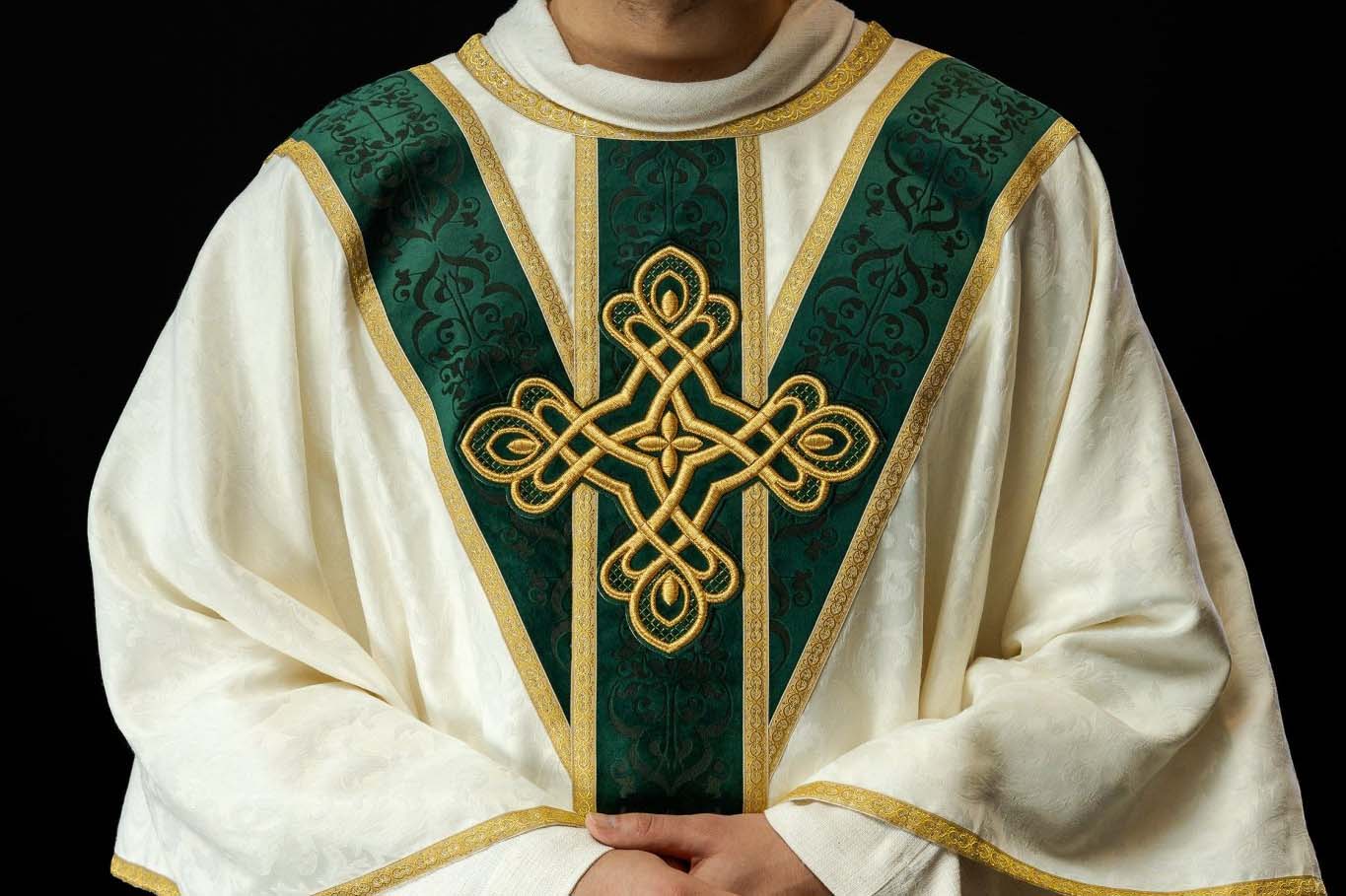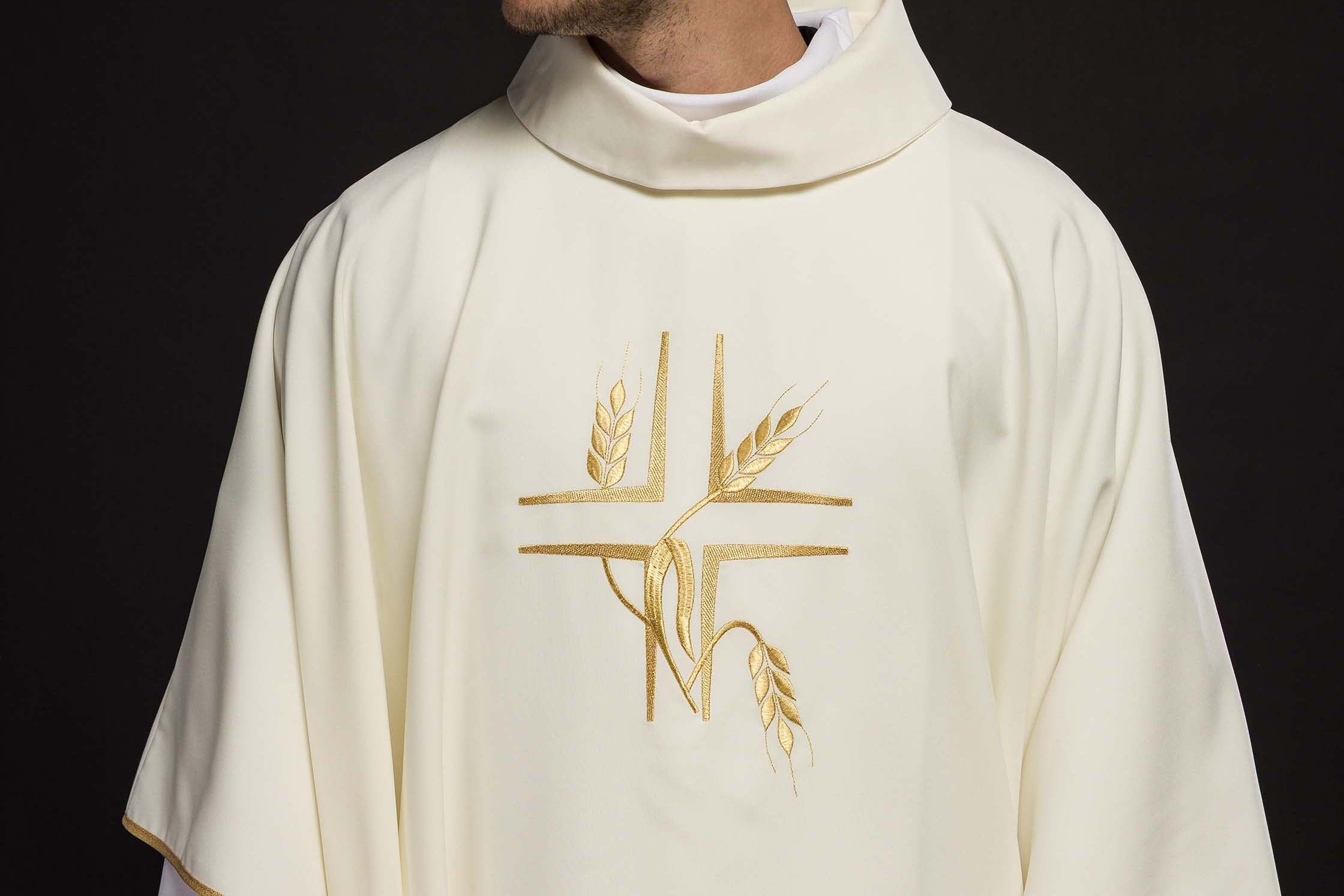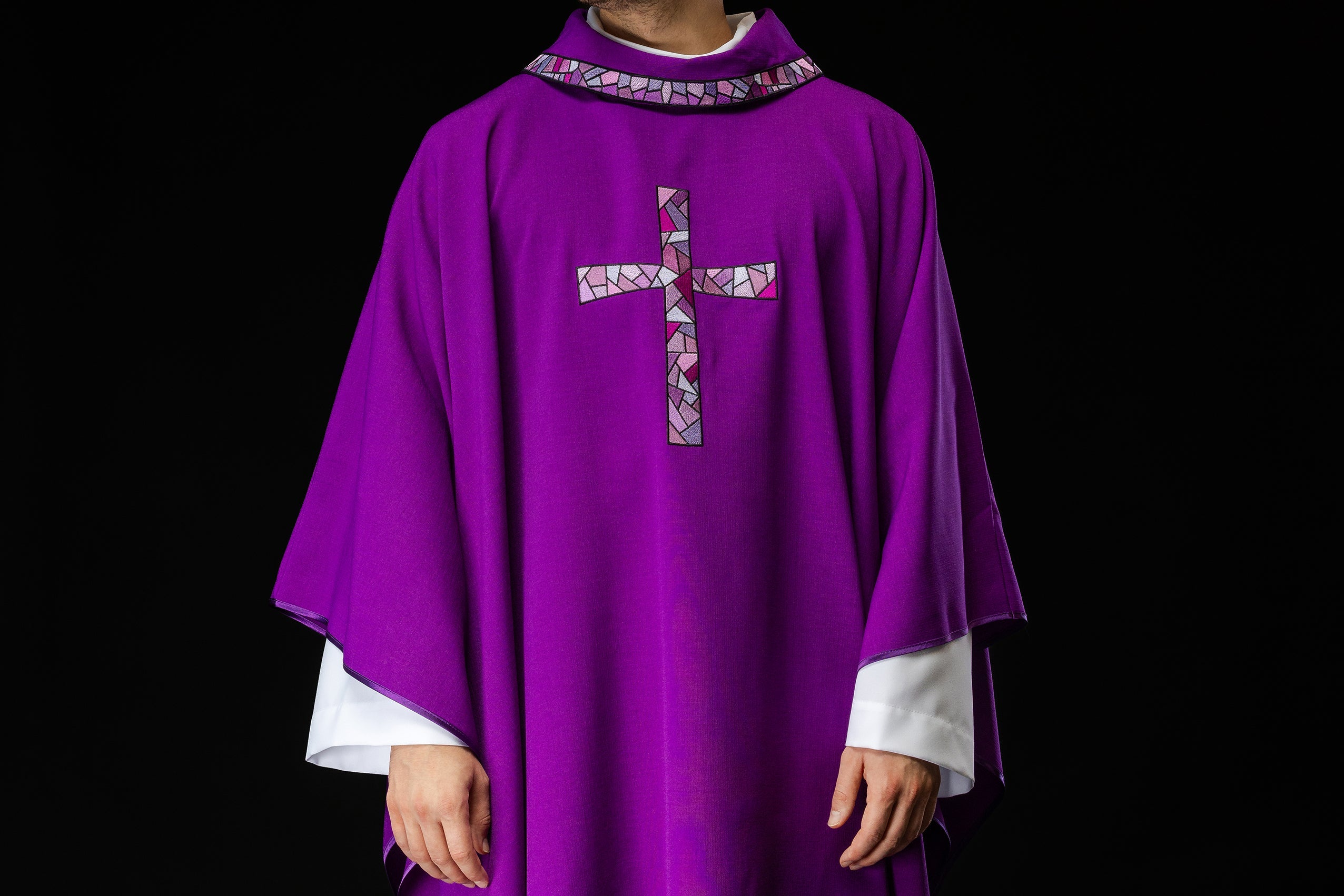
Modern Vestments: Can Tradition and Design Be Successfully Combined?
Modern Chasubles – Can Tradition Be Combined with Design?
Traditional chasubles, richly decorated with embroidery and made of classic fabrics, have accompanied liturgical celebrations for centuries. They are not only priestly garments, but above all a symbol of deep faith, respect, and the solemnity of the rites. However, in the face of a dynamically changing world, must liturgical vestments also evolve? The answer is: definitely yes. Many parishes and priests are looking for solutions that harmoniously combine timeless tradition with sophisticated, modern design. HAFTINA TEXTILE GROUP SP. Z O. O., as a leader in the production of liturgical vestments, has been responding to these needs for years, offering collections that prove that tradition and modernity can go hand in hand.
A Contemporary Look at Materials in Chasubles
The first step towards modernity is the selection of materials. Although classic fabrics such as silk, velvet, and jacquard are still highly regarded, the modern market offers innovative solutions that affect the comfort of wearing and the aesthetics of the vestments. Lightweight, breathable fabrics, often with special weaves that provide better air circulation and less susceptibility to creasing, are becoming increasingly popular. An example is the use of modern polyester blends or specialized knitted fabrics that fit perfectly on the figure, without restricting the priest's movements during the liturgy. Haftina offers, among others, fabrics with Sacrolite technology, which are characterized by exceptional lightness and durability, while maintaining an elegant appearance and are ideal for performing complex embroidery.
New Forms and Cuts of Chasubles
The traditional Roman chasuble, with its classic, wide cut, is timeless. However, the history of the liturgy also knows other forms that can be an inspiration for contemporary designers. Gothic chasubles, with a narrower profile and longer "wings" at the front and back, are gaining popularity due to their elegance and dynamism. A modern approach also means experimenting with details – unique collars, asymmetrical cuts, or subtle finishes with trims can give the vestment a unique character. Haftina follows these trends, offering both classic and more contemporary cuts that are tailored to current liturgical needs and preferences.
Embroidery – Tradition in a New Edition
Embroidery has always been the heart of the chasuble, an element that gives it a sacred dimension and beauty. Although manual techniques are still valued for their artistry and uniqueness, computer embroidery has opened new possibilities. The precision of machines allows even the most complex patterns to be reproduced with incredible accuracy. Contemporary embroidery is not only traditional plant or geometric motifs, but also more abstract compositions, modern interpretations of religious symbols, and even images of saints made with great attention to detail. Embroidery made with metallic threads (gold, silver) or decorated with natural stones is often found, giving the vestments extraordinary splendor and prestige. Haftina is famous for its masterful computer and hand embroidery, creating unique patterns that combine the richness of tradition with modern aesthetics.
What are the most frequently chosen modern embroidery motifs on chasubles?
Among the modern embroidery motifs on chasubles, abstract geometric forms are increasingly appearing, which give the vestments a contemporary character, while symbolizing, for example, the divine order or light. Stylized images of key Christian symbols, such as stylized crosses, grapes, or ears of wheat, which are presented in a modern, minimalist way, are also popular. Marian motifs, although always present, are presented in more contemporary iconographic interpretations. There are also bold designs with the use of contrasting colors of threads or unusual embroidery textures, which attract the eye and emphasize the individuality of the vestment.
Are chasubles with gold or silver embroidery still fashionable?
Definitely yes. Gold and silver embroidery have always symbolized divinity, purity, and royalty. In the context of modern design, these noble threads are used in a more subtle and thoughtful way. Instead of heavy, dense embroidery, designers opt for delicate lines, accents emphasizing the cut of the vestment, or contemporary interpretations of classic symbols. Metallic threads, combined with modern fabrics, create a spectacular but not exaggerated glow, perfectly fitting into the aesthetics of contemporary liturgies. Haftina perfectly uses these techniques, creating chasubles that delight with their splendor and elegance.
What colors dominate in modern chasuble collections?
Although traditional liturgical color rules are still followed (white, green, red, violet, pink, black), certain changes can be observed in modern collections. Designers are increasingly reaching for subdued shades, such as ecru, golden beige, and even graphite or deep navy blue, which give the vestments a modern character. However, it is crucial that these colors are introduced with respect for liturgical tradition. In addition, modern embroidery allows for subtle combinations of colors within one pattern, creating harmonious and aesthetic compositions.
Are modern chasubles suitable for all liturgical occasions?
Modern chasubles can be used for many occasions, but their choice should always be dictated by the liturgical and aesthetic context of a given celebration. For example, simpler, minimalist embroidery on lightweight fabrics can work perfectly in Ordinary Time. More ornate ones, with rich embroidery in colors symbolizing a given holiday (e.g. gold or white for Christmas, red for Palm Sunday), will be suitable for celebrations of a special nature. The key is to find a balance between modern design and the sacred dignity of the vestment. Haftina offers a wide selection of modern chasubles that will work in various liturgical contexts.
What are the advantages of owning a modern chasuble?
Owning a modern chasuble has several benefits. First of all, modern materials often provide greater wearing comfort, which is important during long liturgies. Lighter fabrics, better air circulation, and less susceptibility to creasing are features that every priest will appreciate. Secondly, modern design allows you to express your individual style and aesthetics, while maintaining respect for tradition. The chasuble can become a work of sacred art that inspires and builds a spiritual atmosphere. Thirdly, new embroidery and finishing technologies allow for the creation of extremely durable and spectacular vestments that retain their beauty for years. Haftina focuses on quality and modernity, creating products that are an investment for years.
Is there a risk of losing the traditional character of liturgical vestments in modern design?
The risk of losing the traditional character of liturgical vestments exists, but it can be effectively prevented through conscious design and the selection of appropriate motifs and materials. The key is to maintain harmony and proportions, as well as to use religious symbolism in a thoughtful manner and in accordance with the teachings of the Church. Modernity should not mean rejecting tradition, but creatively transforming and modernizing it. A good example is the modern interpretations of classic embroidery motifs or the use of innovative materials that do not deprive the vestment of its sacred character. Haftina, having extensive experience in creating liturgical vestments, perfectly understands this need for balance and creates products that are both modern and deeply rooted in tradition.
Personalization – The Key to Uniqueness
One of the most valued aspects of the modern approach to the production of liturgical vestments is the possibility of personalization. Haftina enables customers to create unique designs, taking into account individual needs and wishes. This can be embroidery with the bishop's coat of arms, a dedication, a special motif related to the patron saint of the parish, or even the use of specific symbols favored by the priest. This possibility makes the chasuble not only a liturgical garment, but also a personal testimony of faith and identity.
Summary – Harmony Between the Past and the Future
The answer to the question of whether tradition can be combined with modern design in the context of chasubles is: definitely yes. Contemporary technologies, new materials, and a bold approach to design allow you to create liturgical vestments that are beautiful, functional, and spiritually valuable. The key is to skillfully combine timeless symbols and values with sophisticated aesthetics and user comfort. HAFTINA TEXTILE GROUP SP. Z O. O. successfully carries out this mission, creating modern chasubles that are an expression of respect for tradition and a response to the needs of the modern Church. If you are looking for a unique, modern chasuble that harmoniously combines the beauty of embroidery, the quality of the material, and innovative design, we invite you to familiarize yourself with the offer at haftinausa.com.
```




